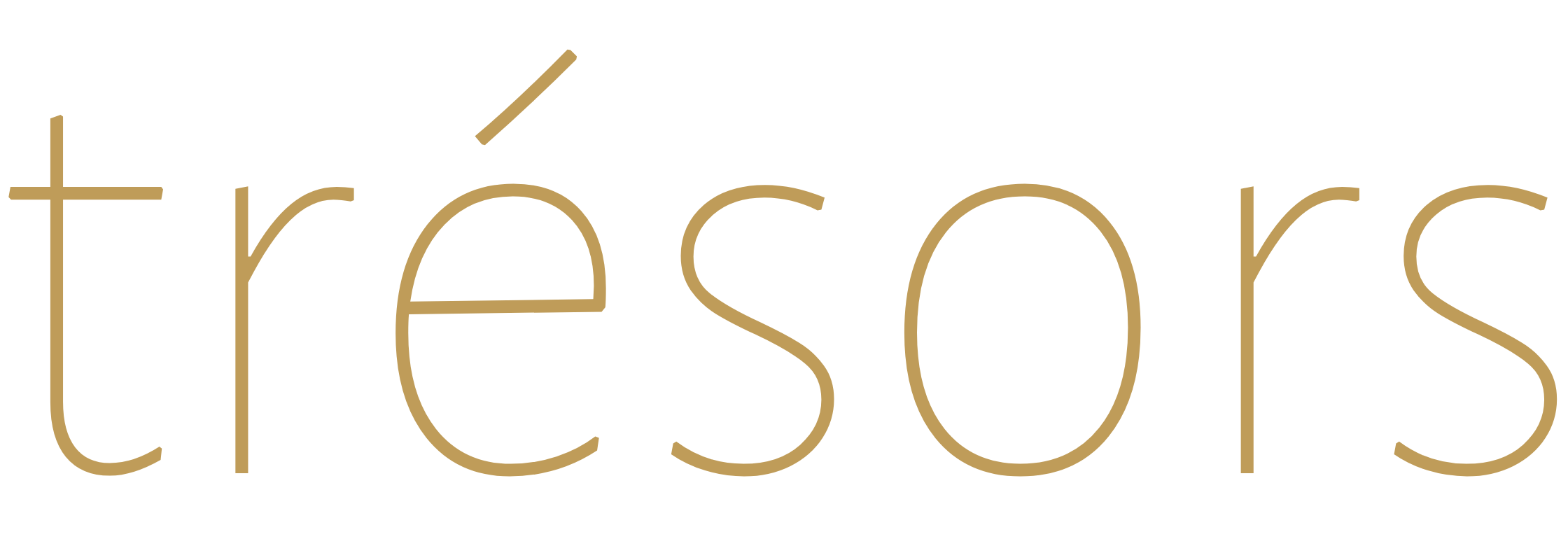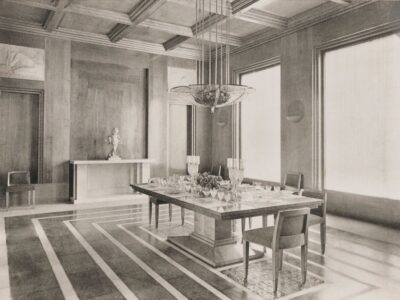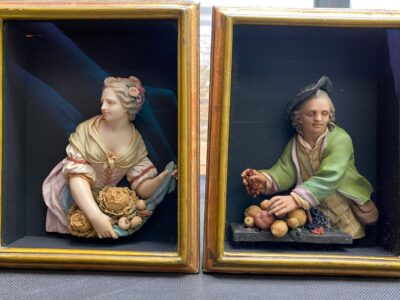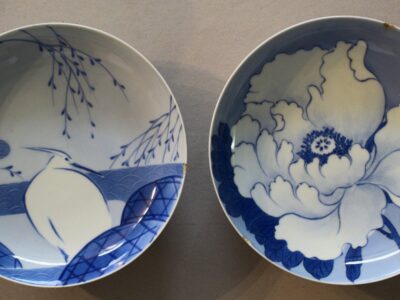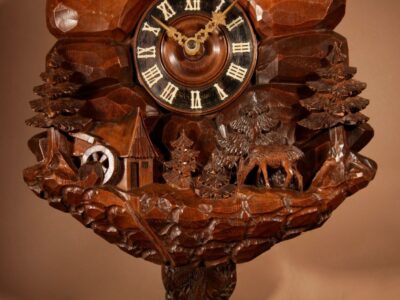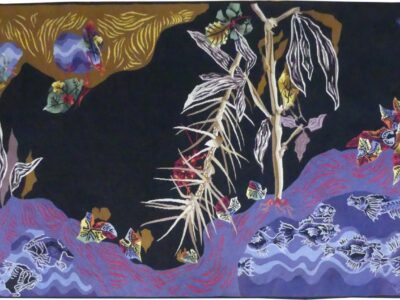Stripes are naturally vibrant. Associate them with bold colors and the summer instantly settles in your house. Maybe because they remind us of beach huts or some candies—only good memories deep-rooted since our childhood.
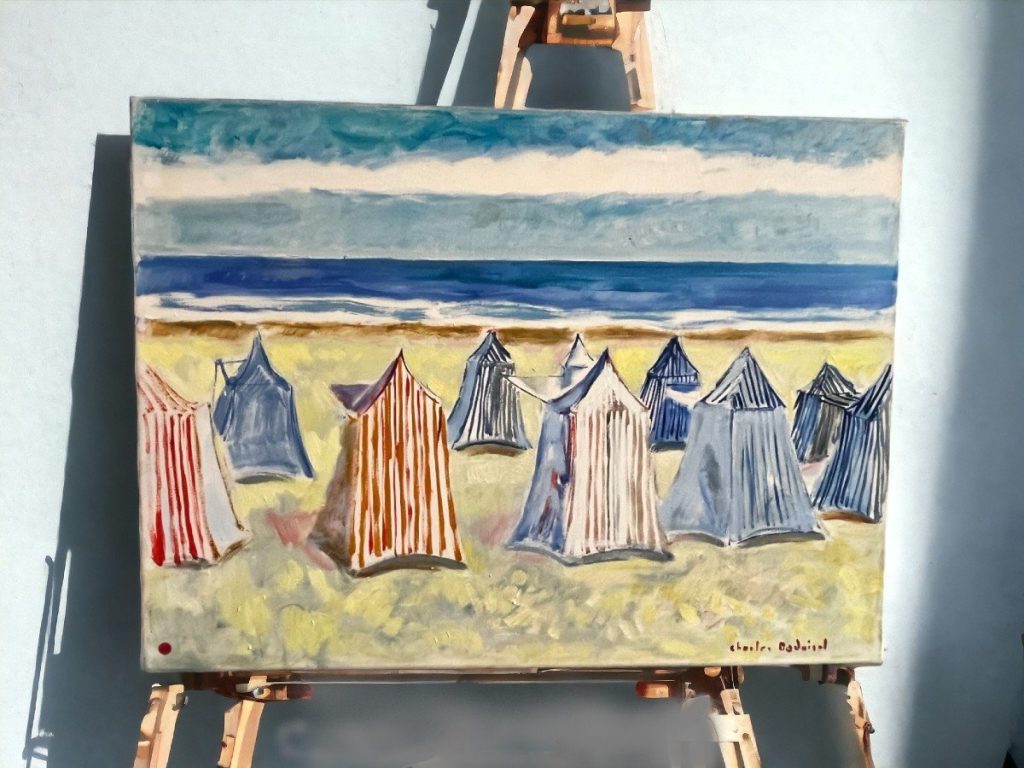
Oil painting of striped beach huts in Brittany in Saint Cast Le Guildo by Charles Badoisel (1925-2009). © ADEQUANTIK
In our selection today, we went essentially for objects with clean lines and primary colors. Most of the decorative objects and artworks presented here are Art Deco or from a later period. These modern designs with geometric patterns convey dynamism and elegance.
Coastal Chic With Stripes
Stripes are emblematic of leisures by the sea and a nautical lifestyle. Originally used on sailor shirts in the French Navy, stripes were associated with deckchairs and parasols in the early 20th century. With such a simple but decorative pattern, it was easy to make sturdy and long-lasting fabrics. Few people at that time could afford holidays by the beach: stripes as a symbol of this luxury became glamorous and fun.
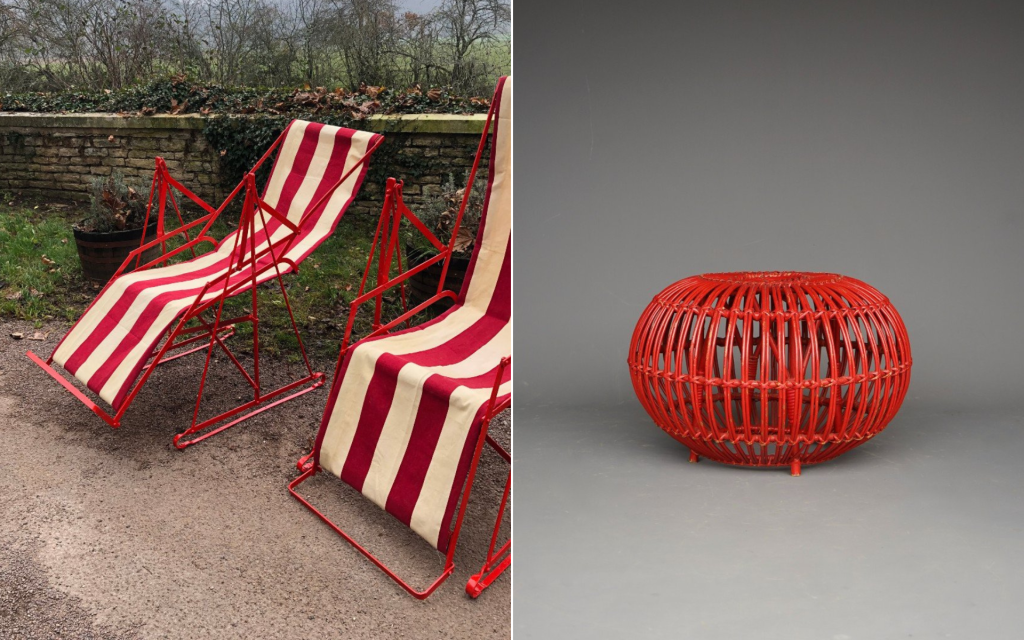
Left: Metal deck chair with striped fabric, early 20th century (© Setruk). Right: Rattan wicker ottoman by Franco Albini (© Via Antica).
Stripes may appear in less obvious places. In rattan furniture, the canes or the weaving frame look like as many 3D stripes—as you can see in the picture above. This type of furniture fits perfectly in a summer cottage or even indoor to add a natural touch to an interior. In the 1950s, Franco Albini (1905-1977) collaborated with Franca Helg (1920-1989) to design many wicker and cane pieces that combine modernity with traditional crafts.
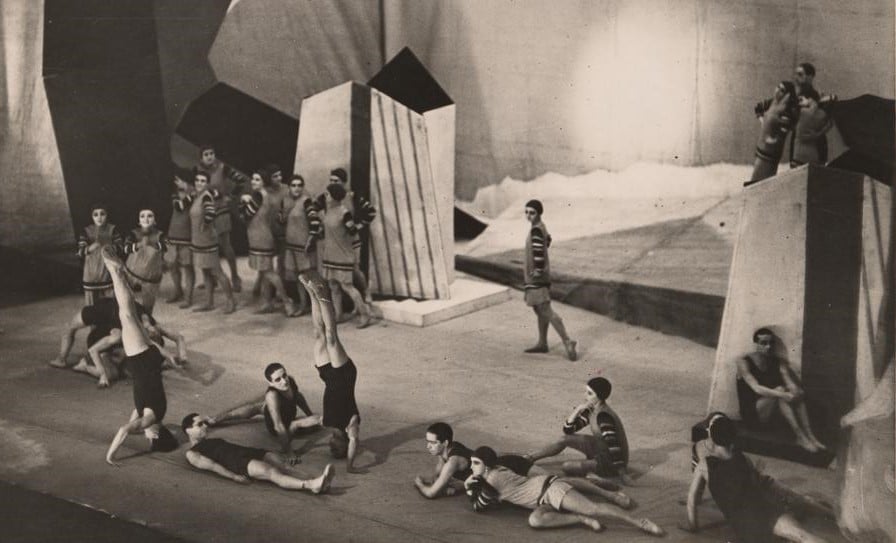
Le Train Bleu, a ballet with a premiere in 1924, where stripes starred in the decor and the costumes designed by Coco Chanel. The story takes place on the French Riviera where the high society leads a frivolous life, attempting to leave behind the horrific Great War. Credit: Library of Congress.
Zesty Stripes for Tableware
Stripes can be festive too. There are several ways to add extra pep to straight lines. For instance, combine them with metal or apply them to curved objects, two options that work extremely well with drinkware.
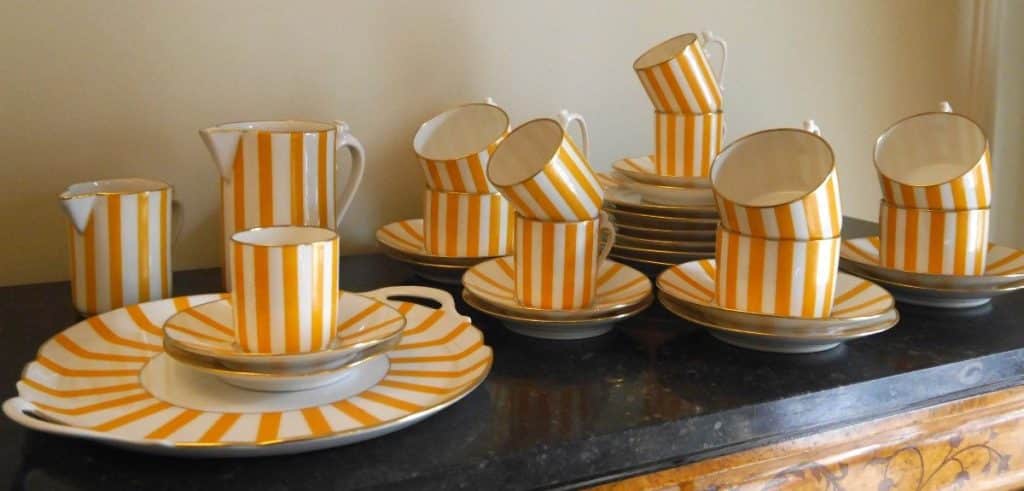
Coffee service and dessert plates with white and yellow stripes. Limoges porcelain set by Chabrol Frères et Poirier (1917-1933). © Igra Lignum
Chabrol Frères et Poirier is a Limoges brand emblematic of Art Deco as in existence only from 1917 to 1933. The company even received an award at the Paris “Exposition des Arts Décoratifs” in 1925. The gold rims and the yellow stripes bring the sun to a table.
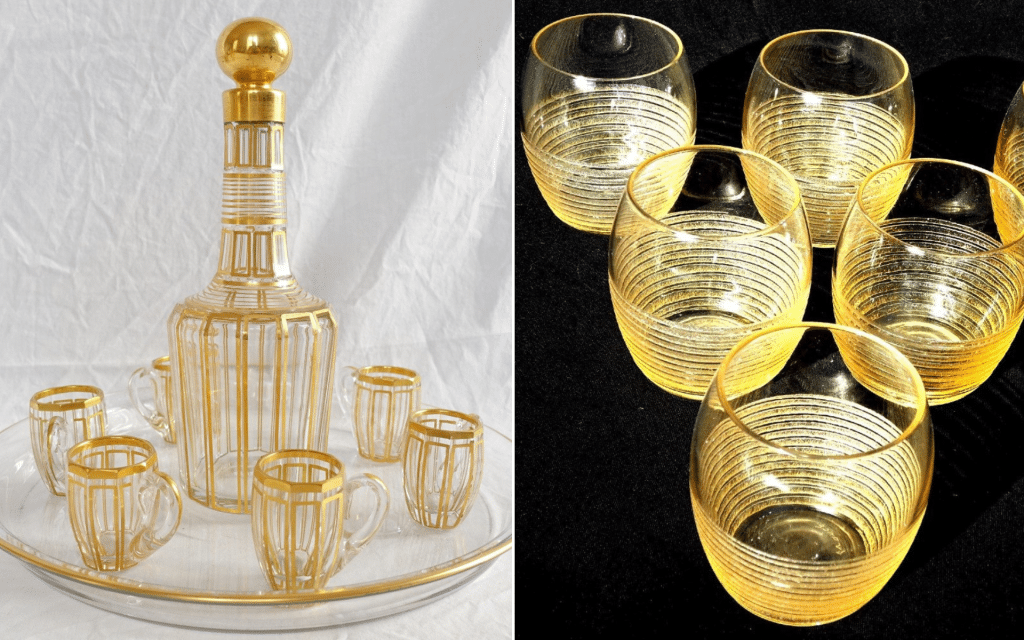
Two crystal liquor sets with stripes from the early 20th century. Left: Cannelures by Baccarat (© GSLR Antiques). Right: acid-etched Art Deco glasses by Daum (© Nancyartpassion).
Lines or stripes associated with crystal glass emphasize volumes while giving space to the clarity and luster of the material.
Would you rather go for vertical or horizontal stripes? They exude a different energy. Vertical stripes give a slender appearance to a glass or a bottle. Reminiscent of fluting on antique columns, they have a classic flair. Horizontal stripes on drinkware are as many circles, which by transparency look like a stack of rings. Symbolizing reunion and friendship, they invite the toasting guests to conviviality.
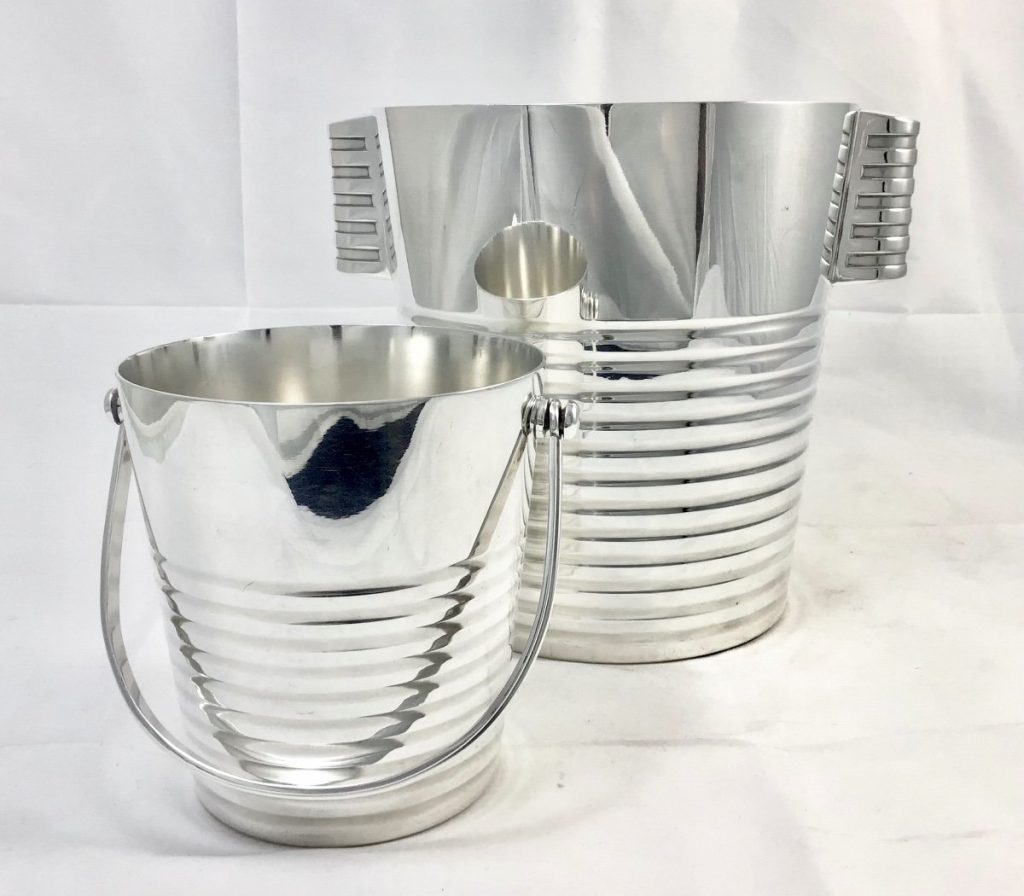
Art Deco champagne and ice buckets by Luc Lanel for Christofle. Ondulations product line. These silver-plated buckets were designed in 1935 (© Ian Panné).
The work of Luc Lanel for Christofle is particularly well known for the tableware delivered for transatlantic liners such as the Normandie (a total of 40,000 pieces). Altogether, Lanel worked for Christofle from 1920 to 1946 when Art Deco was so en vogue. His Ondulations ice and champagne buckets were designed in 1935. The horizontal grooves pop to contrast with the polished and glossy silver. Don’t you think the champagne bucket looks like the muscular torso of a French Navy sailor wearing a striped shirt?
Glass Makes a Statement in Stripes
Stripes à la Murano
If you would like to integrate a vase or lamp with stripes in your home decoration, Murano glass is a wonderful provenance. Using strands of opaque glass (called lattimo) or canes of colors interspersed with transparent ones, the Murano glass masters developed vetro a filigrana in the 16th century creating the iconic Murano with vertical stripes or spirals. But good things don’t get old (as antique fans can acknowledge with confidence) and the techniques adapted to the trends of the eras they crossed.
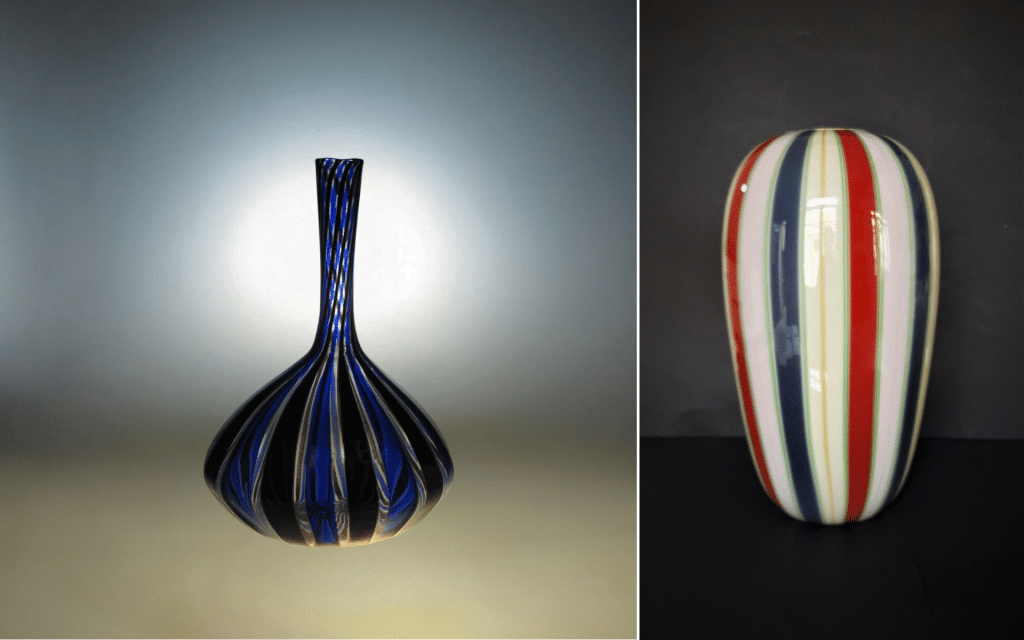
Stripes come in different styles and colors on Murano vases. From the 1930s on the left (© Corneshop Design) to 1985 on the right on a design by Lino Tagliapietra (b. 1934) (© L’Atelier).
The most famous Murano glassmakers of the 20th century were Venini, Barovier and Seguso. They worked with many other glassware artists or designers such as Napoleone Martinuzzi, Carlo Scarpa, Giò Ponti, Tommaso Buzzi, Pietro Chiesa, Fulvio Bianconi, Flavio Poli, Massimo Vignelli.
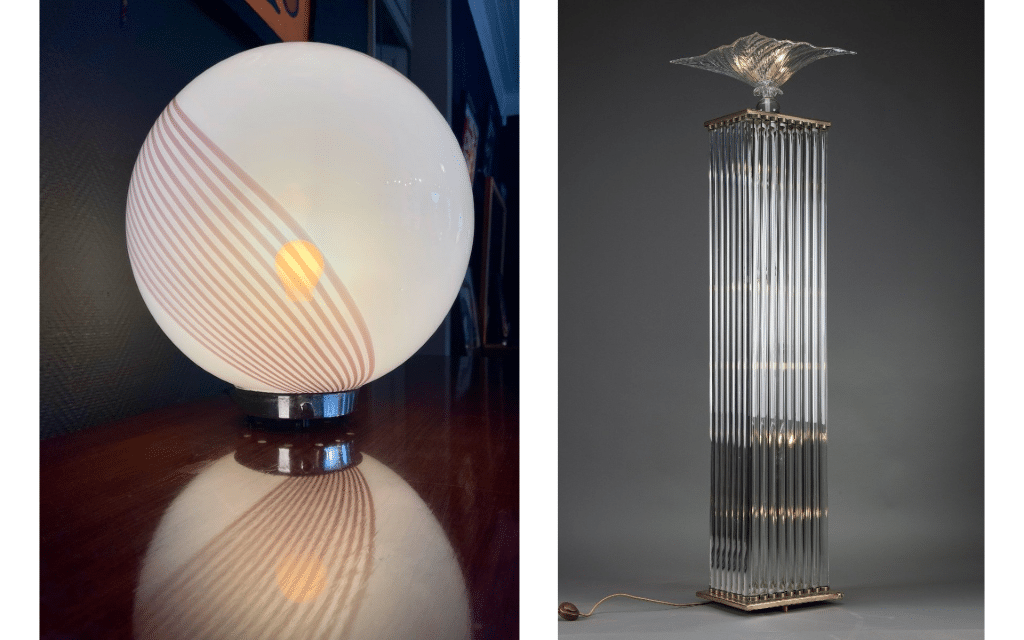
Left: Paolo Venini lamp with a striped spiral (© Galerie Zola). Right: An architectural Murano floor lamp from the 1970s in an Art Deco style (© Galerie Atena).
Joyful French Stripes
Overall, the French glass legacy shows the use of different motifs and patterns compared to Italy. There is a more monochromatic tradition or, on the other end of the spectrum, a more ornamental one with figurative motifs, as illustrated by the glassmakers that emerged around Nancy at the time of Art Nouveau. Came Art Deco, the organic eccentricities had to be tamed into more geometric forms.
Higher on the page, we are showing some Baccarat and Daum drinkware sets. Lalique may have some rare models with vertical or horizontal bands (like for instance the Chevreuse vase), but they are only a few among models developing more intricated patterns.
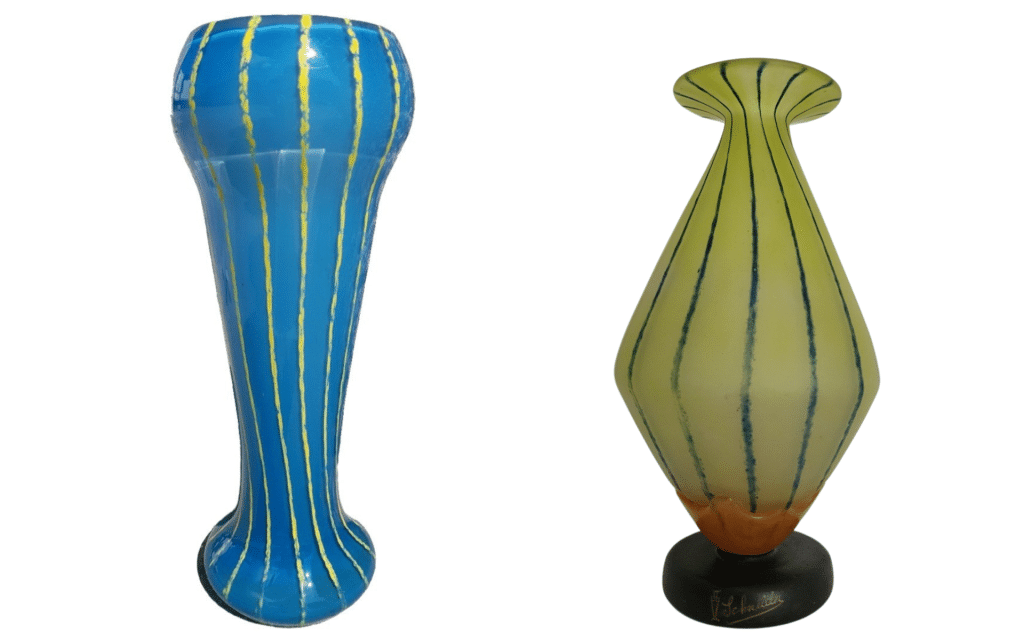
Vases “Filetés” by Schneider. Attributed on the left (© Art 1900), signed on the right (© Clocks and Fine Arts).
Between 1922 and 1925, Schneider (created in 1913 by the two brothers Charles and Ernest) had a special series known as Filetés with vertical powdered-style threads. Schneider was known for its creations incorporating tangy colors lighting up any interior.
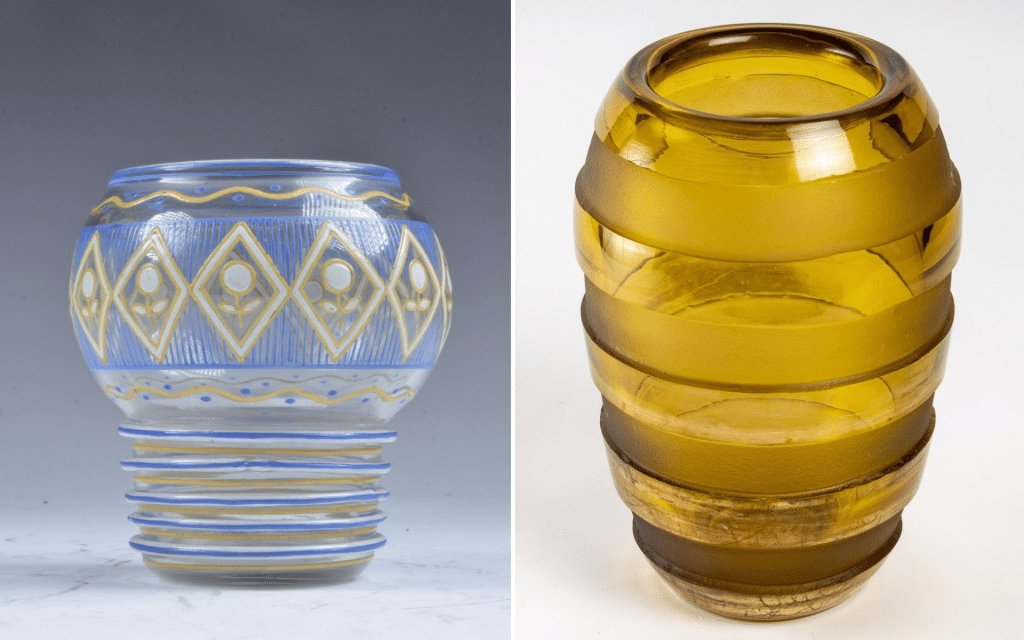
Two Art Deco vases by Jean Luce, both with horizontal bands. Left: © Ruyten Fine Art. Right: © Verre et Cristal.
Jean Luce (1895-1964) was a notable Parisian innovator in tableware. He started creating glassware and ceramics at a very young age as his father had a tableware store. The vase above on the left is characteristic of a first creative phase until 1925 when he used vivid colors and stylized ornaments for his enamels on glass. We see here the simplified and repeated flowers, the stripes and waves with dots in blue, yellow and white giving a seascape and summery feeling. The vase on the right comes from his second phase in 1926-1930 during which he used no motifs. Instead, he focused on geometry, volumes and textures. A new sandblasting technique originally used on metals gave contrasted textural effects with grained vs. polished parts.
Imagine These Ceramics in a Sea Cottage
Royal Boch: Keramis
It is now time to make a stop in Belgium at La Louvière for the Boch ceramics under the Keramis brand. Between 1906 and 1954, Charles Catteau (1880-1966) was a prolific and creative designer and head of the Decoration Department at Boch.
Catteau is most remembered for his Art Deco inspiration. On the left, the seven vertical enameled ribbons are made of roses. The azure blue, cobalt blue, and yellow combined with the eggshell white cracked glaze of the D.704 decor make a very cheerful and breezy, yet elegant, composition. It was created circa 1925. In comparison, the D.681 composition of the vases on the right was released about ten years later. The lavender and purple painted dahlias appear on top of the yellow and black stripes. Catteau had a talent for combining geometry and motifs.
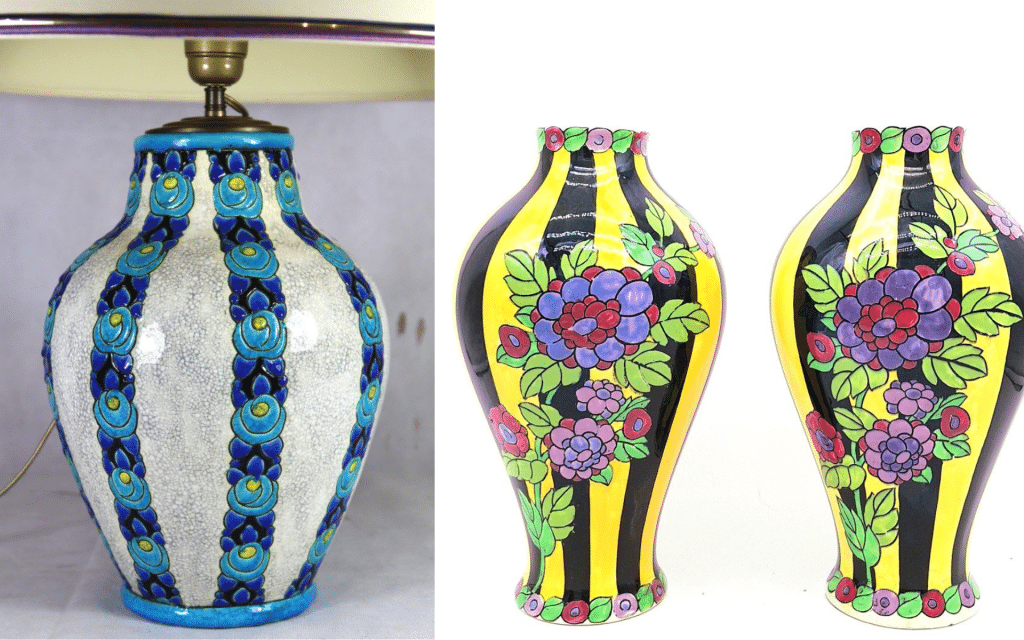
Art Deco vases with stripes or ribbons by Charles Catteau for Boch Keramis. Left: © Le Grenier du Moulin. Right: © Haute Antiques.
Bitossi Ceramiche
Further south in Toscana, Italy, the Roaring Twenties saw the birth of the Bitossi ceramic brand in 1921, building on the maiolica heritage of this area. In 1946, Aldo Londi (1911-2003) became the iconic artistic director of Bitossi. During the mid-20th century, he catapulted the company to the forefront of ceramics with cutting-edge models both in terms of design and engineering.
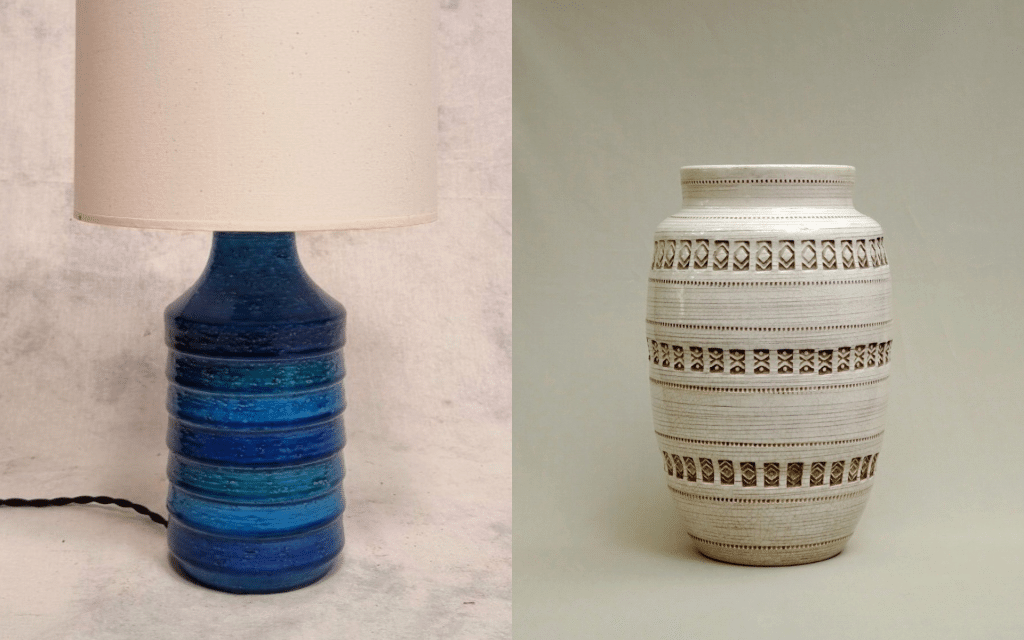
Bitossi mid-century lamp and vase by Aldo Londi. On the left a lamp of the legendary “Rimini Blu” series. Left: © Le Goût de l’Antiquité. Right: © Flashback Antiquity.
Above, on the left, Mediterranean waves seem to be rolling on the “Rimini Blu” lamp. This 1959 series—the most famous work of Bitossi up to this day—was created for an American customer as Rimini, the international beach resort on the Adriatic, was already a staple of the Italian dolce vita by the sea. On the right, this vase has a rustic feel due to the stamping technique. Yet, all the nuances of beige showing in the prints, emphasized by the strings of dots on both sides of the friezes, give it a classic allure.
Roger Capron
For ceramics, if we stay by the Mediterranean but move west to France, we hit Vallauris. Based there, Roger Capron (1922-2006) got incredibly successful. In 1952, Capron opened his own workshop, which grew to a factory with up to 120 people in 1973 before it closed in 1982. Stripes marked his production, particularly in the 1950s and 1960s, in a series you may sometimes find called “Pyjama“. However, he had a much wider portfolio full of animals, mythical creatures and symbols that contributed to his fame.
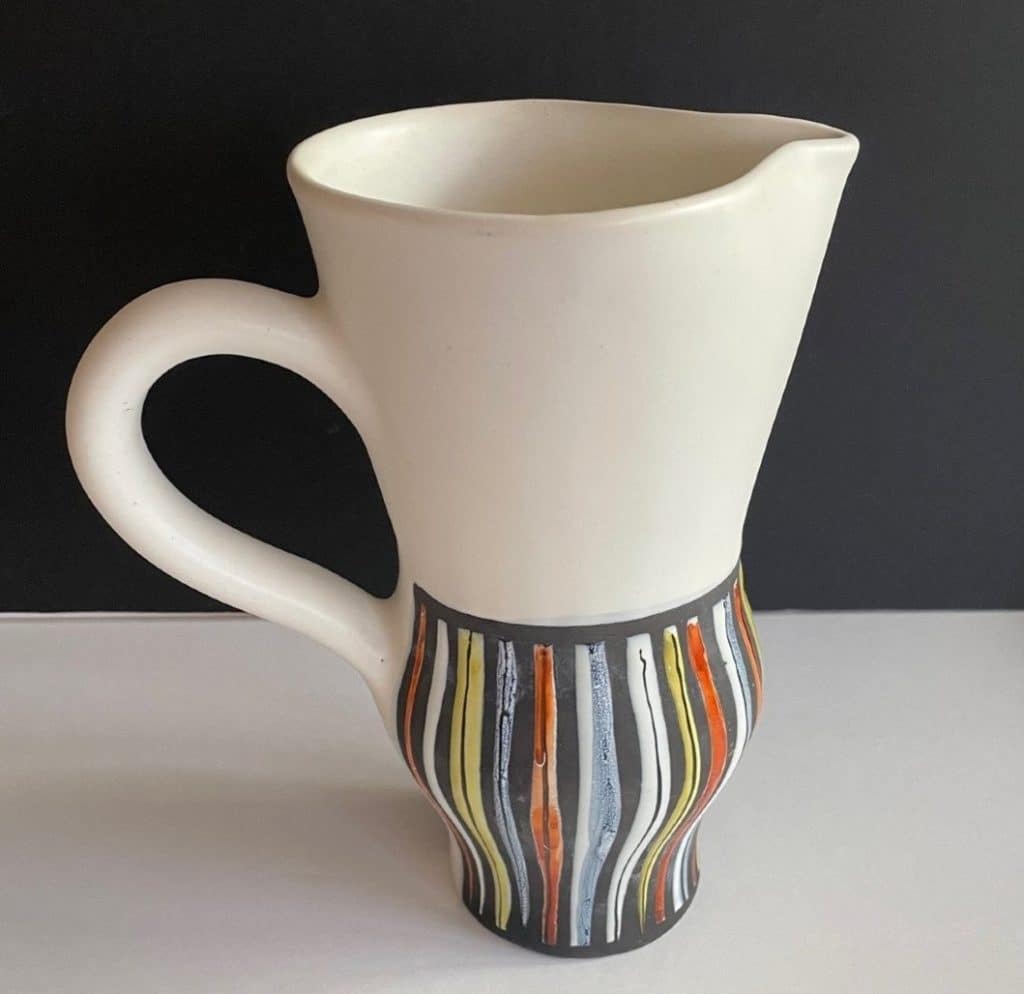
Water jug or vase with stripes by Roger Capron created in the 1950s or 1960s. © Cornershop Design
Time to Sit Down and Relax
Is your head spinning after seeing all these stripes? Let us close this perusal with couches for you to sit comfortably while you ponder what sort of stripes would look best in your interior.
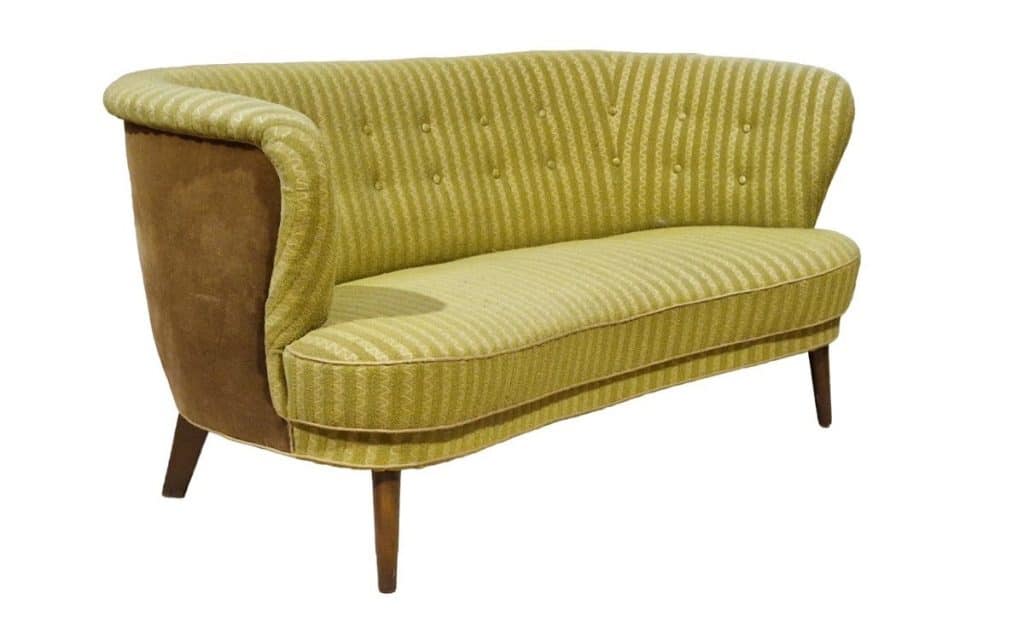
Danish curved banana sofa from the 1940s, with anis green striped fabric. © Galerie87
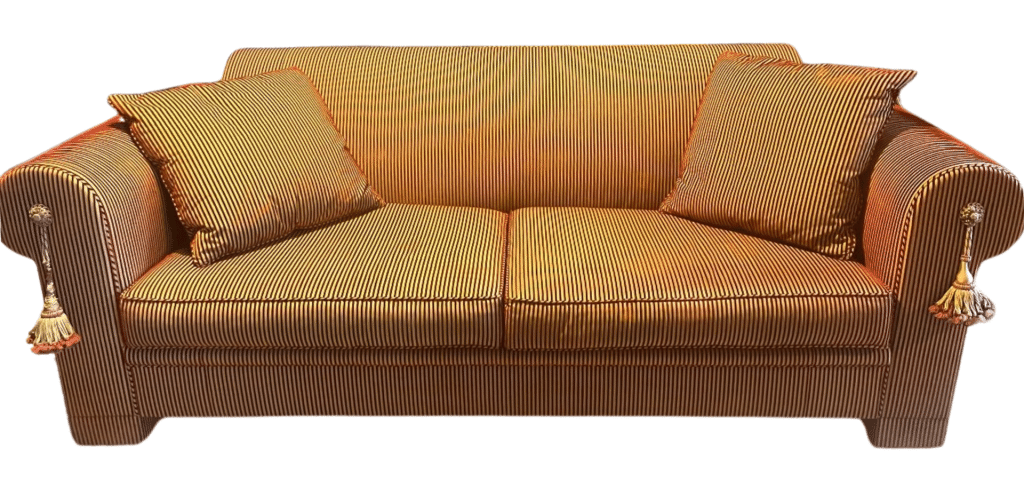
Large designer couch with a red and ocher velvet fabric. © Noto Antica
You May Like
Faience / Maiolica | Glass | Art Deco | Mid-Century | Murano | Schneider | Royal Boch: Keramis | Bitossi Ceramiche | Roger Capron

